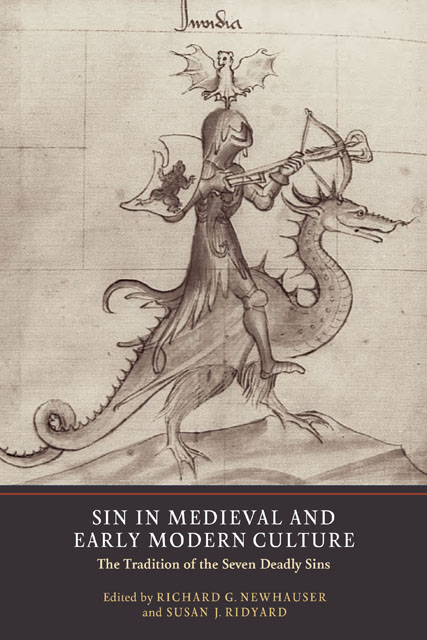10 - John Gower’s Shaping of ‘The Tale of Constance’ as an Exemplum contra Envy
Published online by Cambridge University Press: 28 February 2023
Summary
John Gower’s version of the popular fourteenth-century Constance narrative appears in the Confessio Amantis, a framed narrative organized around a mock confession in which Venus’s priest, Genius, presents narratives that comment on the seven deadly sins. Shaped as an exemplum in bono that presents Charity as remedy to Envy, ‘The Tale of Constance’ serves as effective commentary not only on Genius’s discussion of Envy, but on other aspects of the sin and its remedy presented throughout Book Two. Using both Chaucer’s and Trivet’s versions of the same narrative as points of comparison, this essay demonstrates how Gower infuses his version with pastoral rhetoric in order to transform the figure of Constance into a representative of Charity who initiates religious conversions and forms familial bonds despite the actions of her envious enemies. Through these narrative strategies, Gower purposefully and artfully reshapes his version of the Constance narrative.
Three artists will likely approach the same subject with different artistic purposes in mind. Just so, John Gower, Nicholas Trivet and Geoffrey Chaucer take different approaches to their versions of the popular fourteenth-century narrative of the wrongly accused queen Constance. Whereas Trivet’s version of the story is cast as history and Chaucer’s as a secular saint’s life, Gower’s version transforms the narrative into an exemplum that illustrates the virtue of Charity. A comparison of the three versions will reveal how Gower purposefully infuses his narrative with pastoral rhetoric. In doing so, he transforms the figure of Constance into a representative of charity who initiates religious conversions and forms familial bonds despite the actions of her envious enemies.
Trivet’s ‘Of the Noble Lady Constance’, a richly detailed history, appears in Les cronicles, dedicated to the English Princess Mary of Woodstock. Presumably the source for both Chaucer and Gower, Trivet’s Constance narrative is embedded deeply in Les cronicles and begins and ends with accounts of the establishment of Moriz, Constance’s son, as Roman emperor. Laura Bare-field describes Trivet’s use of female characters such as Constance as providing ‘origins for dynasties and intercessors in the succession process’. Trivet’s emphasis on Constance’s relationship to Moriz indicates that the purpose of his Constance narrative is historical and political: to establish a worthy bloodline for Moriz as future emperor.
- Type
- Chapter
- Information
- Sin in Medieval and Early Modern CultureThe Tradition of the Seven Deadly Sins, pp. 239 - 260Publisher: Boydell & BrewerPrint publication year: 2012
- 1
- Cited by



